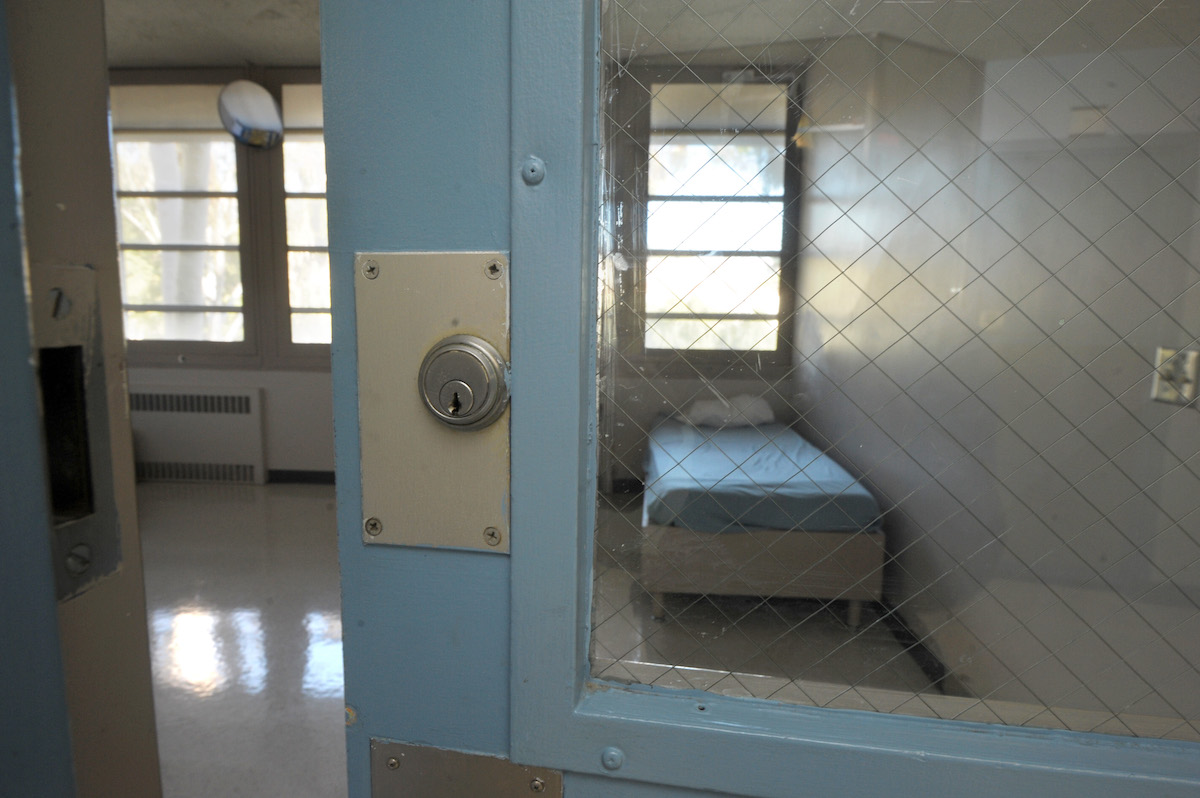Embracing the Chaos
Mental Health Advocates Pushing for Beds Not Cells

It’s a good thing county mental health czar Toni Navarro has a survivor’s sense of humor, given the transformational struggles confronting her department this coming year. Borrowing a line from her yoga instructor, Navarro tried to put a positive spin on the challenges when talking before county supervisors at the dress rehearsal for this year’s budget deliberations: “Okay, it’s going to suck a little. Then it’s going to be fun.” That was a lighter quote than the one she offered earlier in the meeting: “It’s in embracing the chaos that we find the courage to transform,” she said.
But it was the agonizingly desperate testimony the supervisors heard after Navarro spoke from about 20 relatives of seriously mentally ill individuals who’ve found themselves locked up at various times in county jail — often held in isolation — some for as long as two-and-a-half years, that dominated the meeting.
Although the details would differ, the punchline was always the same: The County of Santa Barbara desperately needs more acute care beds for those suffering from serious mental health problems. It does not need more jail cells. In the strategic crosshairs of all this testimony are the hundreds of millions of dollars County Sheriff Bill Brown intends to spend to bring the main jail up to standard. Jail, the supervisors were told, is where mentally ill people go to get worse, not better. If you wouldn’t put someone with cancer or heart disease behind bars, then you shouldn’t do so to people with serious mental health problems.
This is hardly a new argument, but it’s been given a new lease on life by the $6 million fine imposed upon the County of Santa Barbara late last year because of its repeated failure to provide adequate local treatment opportunities for those facing criminal charges who have been deemed to be incompetent to stand trial. Activists with National Alliance on Mental Illness (NAMI) and Families Act — longstanding advocates for more acute care beds and the decriminalization of mentally ill people — are seizing upon the size of this fine to mobilize support for their cause. And the budget, they have learned, is where the supervisors distinguish between meaningful financial support and just good intentions.
George Kaufmann, a longtime mental health advocate, noted that somewhere between one-third to one-half of the people in county jail have been clients of the County’s Behavioral Wellness Department at some time. And on any given month, he added, 10 to 20 people taken to the Cottage Hospital Emergency Room are released after their 72-hour hold expired without ever getting into treatment. “That’s just not right,” Kaufmamn said.
Santa Barbara has 16 acute care beds in what are known as the county’s Psychiatric Health Facility (PHF), where those deemed “5150” (dangerous to themselves or others) can be held involuntarily. Typically PHF patients are held for 13 days, though Navarro stated the goal is to reduce that to just seven. She said a four-bed unit will be opened up imminently for involuntary holds of up to 24 hours.
When asked by Supervisor Laura Capps how many beds the county needed, Navarro said the plan was to engineer the services provided in such a way to minimize the need for beds. Longtime mental health advocate Suzanne Riordan riffed on that, speaking of “seamless transitions and warm hand-offs” — terminology frequently used by county mental health administrators — but adding, “It’s not always that warm.” Lynne Gibbs, whose daughter has long struggled with serious mental illness, noted that the county has been “sitting on” $3 million in state funds that have been earmarked for just such beds for the past five years.
Most of the mental health advocates took pains to praise the supervisors for their support over the years, but one suggested they might be relieved when those in chronic despair overdose on drugs or commit suicide. Supervisor Steve Lavagnino pushed back, noting that 10 years ago, the county’s budget for addiction and mental health services was $69 million; today, he said, it’s $175 million. If the problem seems to have gotten worse, not better, he added, “It’s not for lack of care on our part.”
Push will come to shove in earnest when Sheriff Brown unveils details for his plans to rehabilitate the main jail — which is in serious disrepair — to accommodate additional prisoners. Already some supervisors are expressing sticker shock at what that will cost.
In the meantime, Toni Navarro has to deal with Governor Gavin Newsom’s swing-for-fences proposal of a multibillion-dollar bond initiative to fund the provision of housing for homeless people suffering from acute mental illness. In the same initiative, Newsom would require county governments to divert 35 percent of state funding for mental health programs to housing for those suffering from mental illness.
In the case of Santa Barbara County, 89 percent of Navarro’s departmental budget comes from the state. If Newsom’s proposal were enacted today, Navarro told the supervisors, that would mean a loss of $26 million to $32 million in county revenues that now pay for a range of mental health services. Navarro stressed that the governor’s proposal remains very much a work in progress with many details yet to be hashed out.
Supervisor Das Williams — serving as board chair — responded most directly to those who described the painful journeys mental illness forced their families to take. His wife’s brother, he said, struggled with addiction and schizophrenia, and he termed it “a terrible and terrifying heartbreak.”
“We have much work to be done,” he said.



